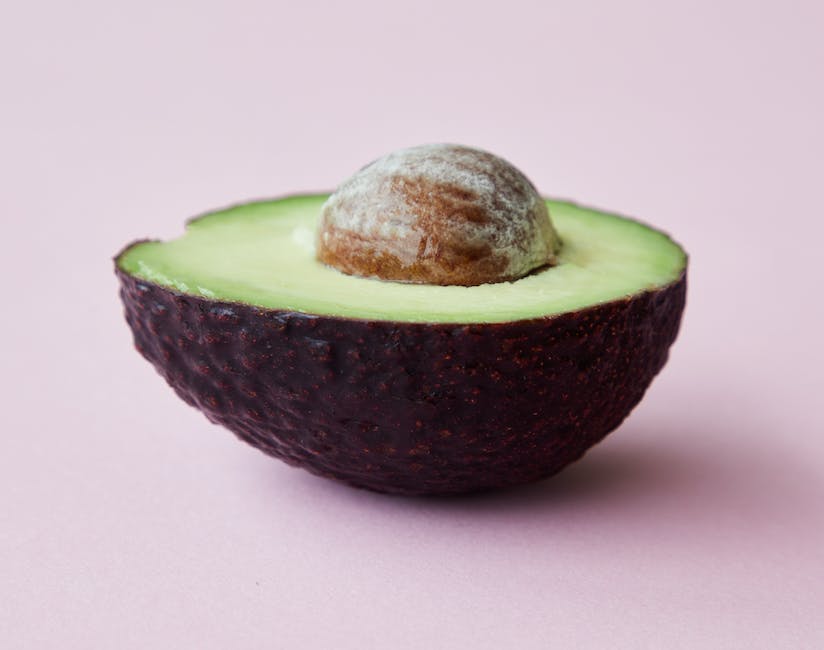Easy Guide: Entertaining and Healthy Cooking for Kids
Feeding kids nutritious meals that they will actually enjoy can be a challenging task for many caregivers. Becoming skilled at cooking for children is a two-fold process involving a firm grasp on children’s nutritional requirements and some creativity.
Typically, a child’s diet should be a balanced mix of fruits, vegetables, lean proteins, and whole grains. It’s also important to recognize appropriate portion sizes for different age groups. Moreover, having a library of fun, appealing, fast-to-prepare meals adds to the magic.
Engaging kids in the kitchen can serve as an empowering learning journey and can also fuel their interest in healthful eating. Investigating ways to make cooking an enjoyable experience for children, teaching them basic culinary skills, and fostering a safe cooking environment are fundamental aspects of this venture.
Understanding Kids’ Nutrition

Understanding Kids’ Nutrition: The Basics
Kids, like adults, need a balanced diet to maintain their health. But unlike adults, children are constantly growing and developing, so their nutritional needs are a bit more specialized. A balanced diet for kids includes fruits, vegetables, lean proteins, and whole grains. Kids need healthy fats to support brain growth. It’s also important to limit sugars, especially those found in processed foods.
An Age-by-Age Guide to Kids’ Nutritional Needs
Different age groups have varied nutritional requirements. Toddlers typically need about 1,000–1,400 calories a day, depending on their activity level and size. School-aged kids need more– 1,600–2,500 calories per day. Teens need even more calories, upwards of 2,000–3,200 per day.
Within these calories, children should get adequate amounts of protein, fiber, calcium, and iron. It’s important to research the specific needs of each age group to present meals that not only please their palates but also provide needed nutrition.
Combatting Nutrient Deficiencies in Children
Children don’t always get all the nutrients they need from their diet. Common deficiencies include iron, calcium, vitamin D, and fiber. Iron is essential for concentration and energy, calcium and vitamin D for bone health, and fiber for a healthy digestive system.
To combat these deficiencies, try incorporating foods high in these nutrients into children’s diets. For example, vitamin D can be found in fortified dairy products and fish, while dry beans and leafy greens are excellent sources of iron.
Understanding Portion Sizes For Kids
Portion sizes are a key aspect of healthy eating. Dish out age-appropriate servings, remembering that kids’ stomachs are smaller than adults’. A helpful guide is the USDA’s MyPlate, which shows that half a child’s plate should be fruits and vegetables, a quarter grains, and a quarter protein with a serving of dairy on the side.
Creating Kid-Friendly Meals with the Right Nutrients
Making meals kid-friendly doesn’t mean serving up chicken nuggets and fries. Instead, think about how to incorporate necessary nutrients into foods that kids love. Make pizza with a whole grain crust and top it with lean proteins and veggies.
Make oatmeal more appealing by stirring in fresh fruits and a small dollop of honey. Offer raw veggies with hummus or yogurt-based dips. With a little creativity and understanding of what kids need nutritionally, you can create meals they’ll love and that you’ll feel good about serving.
Kid-Friendly Recipes

Kid-Friendly Breakfast: Pancake Cereal
Pancake cereal is a delightful and nutritious breakfast for children. All you need are the basic pancake ingredients: 1 cup all-purpose flour, 2 tablespoons sugar, 1 teaspoon baking powder, 1/2 teaspoon baking soda, 1 cup buttermilk, 1 egg, and 2 tablespoons melted butter.
Mix all dry ingredients together, add buttermilk, egg, and melted butter. Heat a non-stick frying pan over medium heat. Use a piping bag to squeeze small amounts of batter on the heated pan. When bubbles form on the pancake, flip it over. Serve with berries and a drizzle of maple syrup for a delicious breakfast.
Fun Lunch: Animal Shaped Sandwiches
Make lunch fun with animal-shaped sandwiches. Start by using a whole grain bread and filling of your choice like turkey and cheese or avocado and ham. Once the sandwich is assembled, use a cookie cutter to cut it into various animal shapes. You can also add vegetables like cucumber slices for eyes and a cherry tomato for a nose. This recipe encourages kids to eat their lunch by making the meal playful and enjoyable.
Dinner Delight: Homemade Pizza
Homemade pizza is a kid-friendly dinner that children can help prepare. Use a pre-made pizza crust or make it from scratch using flour, yeast, and water.
Spread marinara sauce on the crust, sprinkle mozzarella cheese, and top with your child’s favorite ingredients like pepperoni, bell peppers, or pineapples. Bake in a preheated oven at 450°F for about 10-12 minutes or until cheese is bubbly and crust is brown. It is an ideal meal for kids to help prepare, making them more likely to eat and enjoy it.
Healthy Snack: Fruit Kabobs
Fruit kabobs are a healthy, nutrient-packed snack option. Use a variety of colorful fruits. Skewer the fruit pieces onto a stick, alternating and arranging them in a pattern that looks appealing. You can use fruits like strawberries, grapes, blueberries, kiwi, and banana slices.

Serve with a side of yogurt-honey dip. The dip can be made by combining Greek yogurt, honey, and a splash of vanilla extract. These fruit kabobs are not just delicious but also visually exciting for kids.
Sweet Treat: Chocolate Avocado Pudding
Chocolate avocado pudding is a delicious, healthier alternative to traditional sweet treats. Combine ripe avocados, unsweetened cocoa powder, a sweetener like honey or maple syrup, vanilla extract, and a pinch of salt in a blender until smooth. Chill in the refrigerator before serving. This sweet treat boasts healthy fats from the avocado and is free from artificial colors or flavorings.
Engaging Kids in Cooking

Engaging Kids in the Kitchen: Fun Techniques
Engaging children in the cooking process can be a fun and educational experience. Children learn by doing, so having them participate in the preparation of meals can introduce them to new food, foster a sense of independence, and reinforce math and reading skills. It’s vital to ensure that tasks are age-appropriate; for example, preschoolers can help gather ingredients, while older kids can measure and mix.
Also, consider letting children be part of meal planning and grocery shopping. This involvement can build excitement around cooking and eating healthy meals. Use colorful, kid-friendly recipe books, or let them choose from a list of family-favorite meals. Involve them in picking fresh fruits, vegetables, and other ingredients, teaching them the differences in nutritional value in different foods.
Safety Tips
Cooking comes with safety hazards, especially for younger children, so it’s necessary to supervise them closely when they’re in the kitchen. One important tip is to teach children to wash their hands both before and after handling food to prevent the spread of germs. It’s also important for them to learn never to touch knives, open stoves, or hot pots without an adult present.
Oversized cooking tools can be difficult for kids to handle, so opt for kid-friendly utensils and equipment. As they age and as skill levels progress, carefully teach them to handle more complicated tools under supervision.
Transferring hot pans or pots within reach of children is to be avoided. In addition, inculcate safe food handling habits, such as checking meat temperature with a food thermometer, refrigerating food promptly to prevent spoilage and growth of harmful bacteria, and avoiding cross-contamination by using separate chopping boards for fruits, vegetables, and raw meat. The more they practice these safety precautions, the better they’ll be able to internalize them.
Teaching Cooking Skills
Start by teaching them basic skills, such as cracking an egg, mixing ingredients, grating cheese, or peeling vegetables. It can be fun for kids to see the transformation from raw ingredients to finished dishes. As they get more comfortable in the kitchen, they can take on more intricate tasks.
Next, focus on reading and following recipes. This helps to improve their reading comprehension and introduces them to new cooking terms. Measuring ingredients can help reinforce math skills as well. Older kids can start working on more advanced skills like cutting with a dull knife under adult supervision.
With the right approach and perspective, cooking can have a fantastic potential for learning and creativity for kids. But perhaps the most important lesson to teach is that cooking should be enjoyed. Even mishaps in the kitchen can create fun and laughter, and a positive experience in the kitchen can foster a life-long love of healthy eating and a sense of accomplishment.

Ultimately, the goal of cooking for kids is to provide nutritious meals that appeal to their tastes, and simultaneously lay the foundation for healthy eating habits that can last throughout their adulthood. To achieve this, an understanding of children’s nutritional needs complimented by an arsenal of kid-friendly recipes can offer invaluable reinforcement.
Moreover, involving children in the culinary process can broaden their knowledge, spark their interest, and allow them to learn practical cooking skills. Navigating through the nuances of cooking for children, and making it a fun and cooperative endeavor, will undeniably contribute to a healthier and happier dining experience for both you and the kids.
Unlock the power of AI writing with Writio – the ultimate content generation solution! This article/post was crafted by Writio, your trusted companion in creating engaging website content.

